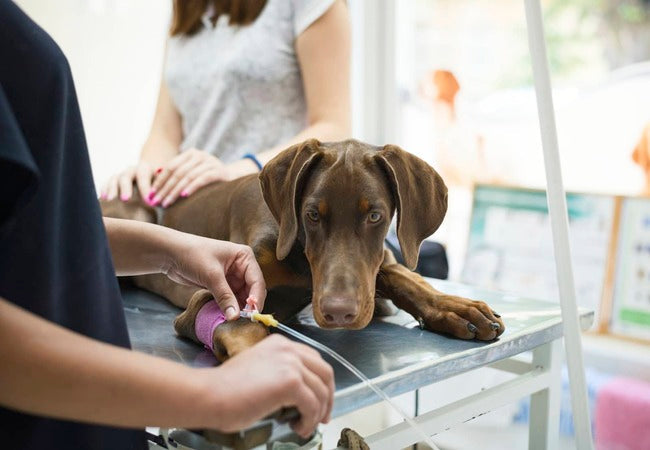Von Willebrand Disease in Dogs 2025: Veterinary Guide & Care🐾🩺

In this article
Von Willebrand Disease in Dogs 2025: Veterinary Guide & Care🐾🩺
By Dr. Duncan Houston BVSc
Hi, I’m Dr Duncan Houston BVSc, veterinarian and founder of Ask A Vet. In this detailed 2025 guide, we’ll cover von Willebrand disease (vWD)—a congenital bleeding disorder where dogs lack functional von Willebrand factor (vWF), impacting their ability to clot effectively. You’ll learn about types, symptoms, testing, management, and prevention—with practical guidance from Ask A Vet. Let’s dive in! 💙🐶
1. What Is von Willebrand Disease? 🤔
vWD is the most common inherited bleeding disorder in dogs, caused by a deficiency or dysfunction of vWF—a critical protein that helps platelets adhere and stabilize factor VIII during clot formation.
2. Types of vWD
- Type I: Partial quantitative deficiency; most common.
- Type II: Qualitative abnormality or dysfunctional protein.
- Type III: Severe or complete absence—life-threatening bleeding.
3. Causes & Inheritance
Inherited autosomal patterns affect both sexes; certain breeds are predisposed: Doberman Pinschers, Shetland Sheepdogs, Scottish Terriers, Welsh Corgis, Poodles, Golden Retrievers, and German Shepherds.
4. Recognizing Signs 🕵️♂️
- Gum or nose bleeding, especially after trauma or brushing;
- Prolonged bleeding after surgery, clipping nails or neutering ;
- Blood in urine or stool;
- Spontaneous bruising or hemorrhage.
Symptoms may be mild and episodic, often unmasked during procedures.
5. Diagnosis & Testing 🔬
- Physical exam & history: look for bleeding tendencies before procedures;
- CBC & clotting panel: platelet count & coagulation times usually normal ;
- BMBT: testing mucosal bleeding time;
- vWF antigen assay: measures vWF quantity;
- vWF functional assays: assessing platelet binding;
- Genetic tests: screen carriers—essential for breeding programs.
6. Treatment & Emergency Care 🛠️
- No cure: focus on bleed prevention;
- Desmopressin (DDAVP): boosts vWF release—useful before minor procedures ;
- Plasma or cryoprecipitate transfusions: to control acute bleeding ;
- Avoid NSAIDs, aspirin, estrogen, certain antibiotics: these worsen bleeding risk ;
- Soft diet & gentle care: to reduce oral injury risk.
7. Prognosis & Management
- Type I dogs often lead normal lives with preventive care;
- Type III may cause serious bleeding; long-term management is critical.
- Bleeding episodes are manageable with timely treatment;
- Breeding affected dogs is not advised—genetic control is key.
8. Prevention & Home Guidance 🏡
- Use soft toys, avoid bones/rawhides;
- Pre-screen breeds at risk;
- Inform vets about vWD before surgeries;
- Store emergency supplies and vet contacts;
- Regular wellness checks to monitor bleeding risk;
- Place medical alert tags in case of emergency.
9. Ask A Vet💡
- Ask A Vet: remote guidance before procedures, planning DDAVP use, and emergency teletriage;
10. When to Call the Vet 🚨
- Uncontrolled bleeding from any site;
- Spontaneous nose or gum bleeds;
- Heavy bleeding during estrus or post-op;
- Large bruises or blood in urine/stool;
- Before any surgery or dental procedure.
Final Thoughts 📝
Von Willebrand disease in dogs varies from mild to severe, but with awareness and proactive care—including testing, planning, and safe handling—most dogs thrive. With resources from Ask A Vet, supportive products via you’re equipped for your dog’s safest life in 2025. 🐾💙
If your dog is from a breed at risk or has a bleeding history, book a telehealth consult via AskAVet.com. And don’t forget to download our app for reminders, logs, and personalized support. 🌟


